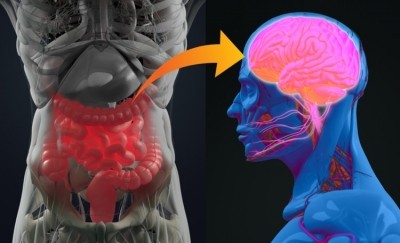GROWTH ASIA 2022
Maintaining control: Why consistency and quality control is paramount in postbiotics production

This was the opinion of Cargill Microbiome Program Manager Dr Briana Kozlowicz, who was presenting on the postbiotics sector at our recent Growth Asia Summit 2022 event in Singapore.
“We go by the International Scientific Association for Probiotics and Prebiotics (ISAPP) consensus definition at Cargill, which defines probiotics as a preparation of ‘inanimate microorganisms and/or their components that confer health benefits on the host’,” Dr Kozlowicz told the floor.
“There was an ISAPP panel convened to define these postbiotics products which are made with intentionally dead microbes as the effectors, essentially having non-living microbes improve the health of consumers even after being killed via known methods.
“We do realise that postbiotics may be a bit contentious among the probiotics crowd, and there are several definitions out there that differ on some specifics, so it is always best to understand where any of your collaborators are coming from or what consumers are prioritising.”
The crucial components of postbiotics that are able to confer health benefits are the metabolites contained in the product, which are small molecules left over by the microorganisms after death – these can include small chain fatty acids, enzymes, lysates, vitamins, amino acids and many more.
“There are many beneficial postbiotics available, but the biology getting to them is often messy, [so] some factors need to be observed to ensure each postbiotic is unique and consistent,” she said.
“The use of a controlled process here is very important in order to ensure that the resulting products are not only unique but also reproducible so that consumers are consistently getting the benefits they seek.
“A standard process would see the selection of a particular microbe e.g. a yeast which is alive and making metabolites, then these would be fermented under strictly controlled growth conditions, followed by the input of a consistent, specific nutrient mix.
“At the end of the fermentation process, there will then be a very tightly controlled finishing process which essentially controls the killing method used to make the yeast inanimate but leave the desired metabolites, and finally this postbiotic mixture will be sent for quality control to ensure consistency.
“For instance, the fermentate for our flagship postbiotic product EpiCor is a unique product but its identity is consistent and verified through the use of FTNIR (Fourier Transform Near Infra Red) spectroscopy – this guarantees the same “fingerprint” for each lot every time EpiCor is produced and released for sale.”
Health benefits for consumers
Dr Kozlowicz also highlighted multiple ways by which postbiotics are able to confer desired health benefits to consumers, and similar to prebiotics and probiotics, these can go far beyond just gut health benefits.
“Even though the consumption of postbiotics tends to be oral, the microbial metabolites can have impacts beyond gut-related benefits such as nutrition and weight,” she said.
“There can also be benefits for the gut-brain axis which will impact mood and sleep; and for the immunity system – the general way to do this now is to target the health condition of interest e.g. cognition, then identify the target metabolite of interest or aim to create a new one, then perform small-scale prototype screening before going on to larger scale prototype tests.
“Modern technologies such as metabolomics fingerprints are very useful at the small-scale stage in order to help us see distinctive differences and select candidates to look at deeper as it can scan large numbers of candidates such that we can prioritise the ones that perform best, and then in vitro is used to differentiate further.”






















